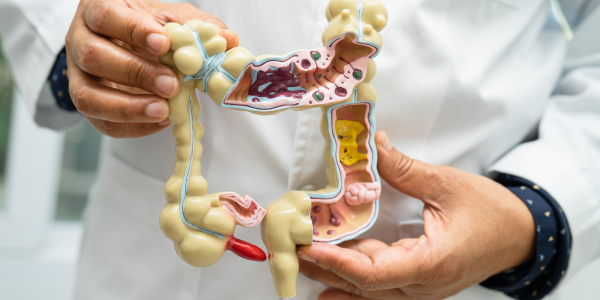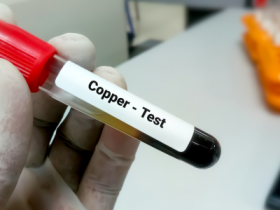Alzheimer’s disease (AD) is a progressive neurodegenerative disorder [1], primarily characterized by memory loss, cognitive decline, and behavioral changes [2]. As the most prevalent form of dementia, AD accounts for 60–80% of all dementia cases worldwide [3]. Currently, over 50 million people globally live with dementia, with AD being the leading cause. The risk of developing AD increases significantly with age, doubling approximately every five years after the age of 65. Nearly half of individuals aged 85 and older have AD, with prevalence rates reaching about 25–30%. This trend is expected to continue as the global population ages, posing significant challenges for healthcare systems and society [4].
The societal and economic impact of AD is profound, affecting not just those diagnosed but also their families, caregivers, and the broader healthcare system. As the number of older adults increases worldwide, the prevalence of AD is projected to rise dramatically, escalating the demand for healthcare services, long-term care, and economic resources [5]. The psychosocial effects are also considerable, with patients experiencing a gradual loss of independence and quality of life. They face increasing difficulties in communication, daily activities, and social interactions. Meanwhile, caregivers often endure significant emotional and physical stress, financial burdens, and reduced quality of life due to the high demands of caregiving. This scenario underscores the need for comprehensive strategies to manage the growing impact of AD on individuals and communities [6].
A combination of genetic, environmental, and lifestyle factors influences AD prevalence [7,8]. High-income countries with older populations, such as those in North America and Western Europe, report higher prevalence rates of AD. In contrast, lower prevalence rates are typically observed in low- and middle-income countries, although these rates rise rapidly as life expectancy improves and populations age [9]. Genetic factors play a crucial role in the risk of developing AD. The apolipoprotein E (APOE) ε4 allele is the most significant genetic risk factor for late-onset AD. Individuals carrying one copy of the APOE ε4 allele have an increased risk, while those with two copies face an even higher risk [10]. Additionally, early-onset AD, which occurs before age 65, is often linked to mutations in the APP, PSEN1, and PSEN2 genes, highlighting the genetic role [11].
Emerging research has increasingly focused on the role of neuroinflammation in AD, highlighting the significant contribution of inflammatory processes to disease progression [12]. Neuroinflammation in AD involves activating glial cells, particularly microglia and astrocytes, the brain’s resident immune cells. Initially, microglia attempt to clear amyloid-beta (Aβ) plaques through phagocytosis, but chronic activation releases pro-inflammatory cytokines and chemokines, exacerbating neuronal damage. Astrocytes, which support neuronal function and maintain the blood-brain barrier (BBB), also contribute to the inflammatory milieu by releasing inflammatory mediators. This persistent activation of glial cells creates a cycle of inflammation and neurodegeneration, further accelerating AD progression [13].
In the elderly population, a significant shift in gut microbiota composition, known as dysbiosis, is frequently observed, characterized by a decline in microbial diversity and an increase in pathogenic species [14]. Studies have shown that this imbalance often leads to an overrepresentation of Gram-negative bacteria, such as Escherichia coli and Bacteroides. These microorganisms produce lipopolysaccharides (LPS), potent pro-inflammatory endotoxins that can exacerbate systemic inflammation, a critical contributor to the pathogenesis of AD [15].
Aging is characterized by the gradual decline of physiological functions, including reduced cellular repair and tissue renewal capacity, diminished resilience to stressors, impaired immune function, and reduced metabolic efficiency, often resulting in chronic conditions and frailty [16]. As mentioned above, aging is associated with a marked decline in immune function, particularly cellular immunity [17]. Immunosenescence affects the adaptive and innate immune systems, compromising the body’s ability to respond effectively to pathogens, including bacteria and fungi [18]. Reduced T-cell activity and impaired phagocytic functions in macrophages and microglia exacerbate this vulnerability, allowing for unchecked microbial proliferation, including Gram-negative bacteria and opportunistic fungal infections such as candidiasis [19].
Oral health issues, including dehydration, candidiasis (oral thrush), and poor oral hygiene, are common in elderly individuals with AD and can significantly impact both systemic and cognitive health [20]. Dehydration [21], often due to cognitive decline and difficulty swallowing, leads to dry mouth (xerostomia), fostering bacterial and fungal overgrowth, which increases the risk of infections like candidiasis. This fungal infection, common in elderly AD patients, is exacerbated by reduced immune function, medication side effects, and poor oral hygiene. Chronic oral infections and poor oral status can elevate systemic inflammation, which is linked to neuroinflammation in AD [22]. Pro-inflammatory molecules and bacteria from the mouth can enter the bloodstream, cross the BBB, and activate microglial cells, contributing to the accumulation of amyloid-beta plaques and tau tangles, hallmarks of AD. Thus, maintaining oral hygiene and hydration is crucial for reducing inflammation and potentially slowing AD progression. Proper dental care and infection management can improve quality of life. They may positively impact the course of AD by mitigating some of the inflammatory processes driving neurodegeneration [23].
Chronic constipation, common in older adults, is often linked to a dysregulated gut microbiota, characterized by a reduction in beneficial bacterial species, such as those producing short-chain fatty acids (SCFAs), and an increase in pathogenic or pro-inflammatory microorganisms. The role of gut microbiota in elderly constipation and its relevance to neuroinflammation highlight the importance of maintaining a healthy microbiome as a potential therapeutic avenue for mitigating AD progression. Targeting gut dysbiosis through dietary interventions or probiotics may offer promising strategies to reduce gastrointestinal and neuroinflammatory burdens in aging [24].
In individuals with AD, the weakening of these immune defenses leads to chronic infections, which further aggravates systemic inflammation and, in a vicious circle, disrupts immune regulation. The heightened systemic inflammatory state—low-grade inflammation—may result in peripheral immune cells infiltrating the central nervous system (CNS) through compromised BBB functioning, further contributing to neuroinflammation. This interplay between weakened immunity and microbiota-induced inflammation accelerates the progression of neurodegenerative changes in AD [25].
Recent studies have emphasized the role of the gut–brain axis and the involvement of gut microbiota in AD, revealing a novel aspect of neuroinflammation [26]. The gut–brain axis refers to the bidirectional communication network between the gastrointestinal tract and the central nervous system [27]. Dysbiosis, or an imbalance in gut microbiota composition, has been implicated in neuroinflammation and could contribute to the pathogenesis of AD [28]. Changes in the gut microbiota can affect the production of metabolites, modulation of the immune system, and gut permeability, all of which can influence brain health [29]. This connection suggests that gut microbiota may play a role in the inflammatory processes observed in AD, highlighting the potential for microbiota-targeted therapies [30].
The impact of normal gut microbiota on neuroinflammation and AD is further emphasized by the production of microbial metabolites, such as SCFAs, which have been shown to modulate inflammation and immune responses [31]. SCFAs, including butyrate, acetate, and propionate, are produced by the fermentation of dietary fibers by gut bacteria, can cross the BBB and influence microglial activity, and are shown to exert anti-inflammatory effects [32]. Conversely, dysbiotic gut microbiota can produce pro-inflammatory molecules, such as lipopolysaccharides (LPS), which have been linked to the activation of microglial cells and the triggering of Toll-like receptor 4 (TLR4) pathways, facilitating neuroinflammation and contributing to amyloid-beta (Aβ) peptide plaque accumulation. In older adults with AD, this microbial imbalance exacerbates the breakdown of the intestinal barrier, allowing LPS to translocate into circulation and reach the brain, intensifying inflammatory cascades that worsen neurodegeneration [33].
Despite decades of research, there is currently no cure for AD, and available treatments only provide symptomatic relief without altering the underlying disease progression. The complex and multifactorial nature of AD pathology poses significant challenges for developing effective therapies [34]. Recent research has increasingly focused on understanding the underlying mechanisms of the disease, including the roles of neuroinflammation, oxidative stress, and the gut–brain axis, to identify new therapeutic targets [35]. This research explores how these interconnected processes contribute to the initiation and progression of AD, intending to develop interventions that can modify the disease course [36].
One of the hallmark features of AD at the molecular level is the accumulation of amyloid-beta (Aβ) peptides in the brain, which form extracellular plaques [37]. Aβ peptides are derived from the cleavage of amyloid precursor protein (APP) by beta and gamma secretases [38]. The aggregation of Aβ into insoluble plaques disrupts cell communication and activates immune responses, contributing to neuroinflammation and neuronal damage [39]. Recent advances have been made in understanding the clearance of Aβ from the brain, highlighting the role of the perivascular drainage pathways and emphasizing how Aβ is cleared along the walls of blood vessels in the brain through a system of perivascular spaces. This process, also known as the glymphatic system, facilitates the removal of waste products, including Aβ, from the brain. However, when this clearance mechanism becomes impaired, Aβ can accumulate, contributing to plaque formation and disease progression [40].
Recently, the FDA-approved Eli Lilly’s drug Kisunla (formerly known as donanemab), an anti-amyloid therapy for AD, represents a significant step forward in treatment approaches. Unlike traditional therapies that primarily target symptoms, Kisunla focuses on modifying the underlying disease process by reducing amyloid-beta plaque accumulation in the brain, a key pathological hallmark of AD. Clinical trials have shown that Kisunla can slow cognitive and functional decline in patients with early-stage AD, offering new hope for altering the disease course rather than just managing its effects. This approval marks a significant advancement in the search for disease-modifying therapies in Alzheimer’s care.
Another significant pathological feature of AD is the presence of neurofibrillary tangles (NFTs), composed of hyperphosphorylated tau protein. Tau is a microtubule-associated protein that stabilizes neurons’ microtubules [41]. In AD, tau undergoes abnormal hyperphosphorylation, causing it to detach from microtubules and aggregate into tangles within neurons. This disrupts the transport system within neurons, leading to cell death and contributing to the neurodegenerative process [42].
The gut microbiota’s influence on systemic inflammation and neuroinflammation suggests that the gut–brain axis could be a critical factor in the disease’s progression. This hypothesis is supported by findings that individuals with AD often have altered gut microbiota compositions compared to healthy controls, with decreased levels of beneficial bacteria and increased levels of pro-inflammatory species. These changes in gut microbiota could promote neuroinflammation by affecting the permeability of the gut and BBB, allowing inflammatory mediators to enter the brain and exacerbate AD pathology [43].
Gasotransmitters, such as nitric oxide (NO), hydrogen sulfide (H2S), and carbon monoxide (CO), are involved in the pathophysiology of AD, linking redox balance, gut microbiota, and epigenetic processes [29]. NO, involved in vascular tone and neurotransmission, can exacerbate oxidative stress when dysregulated [44]. H2S is a potent antioxidant, supporting gut bacteria and modulating gene expression through histone acetylation [45]. CO provides anti-inflammatory effects, helps maintain gut barrier integrity, and influences epigenetic changes [46].
This comprehensive synthesis of AD research underscores this disorder’s complexity and multifactorial nature. It highlights the need for a holistic approach to AD research and treatment, emphasizing the importance of addressing the diverse factors contributing to disease progression. Researchers hope to develop more effective strategies for preventing, diagnosing, and treating AD by exploring the interplay between genetic, environmental, lifestyle, and biological factors.
The primary objective of this review is to compile and synthesize current research on the role of neuroinflammation and microbiota involvement in AD. The review employs a detailed and structured approach for searching, selecting, and analyzing relevant studies published between 1 January 2021 and 31 December 2023. A comprehensive literature search was conducted across multiple electronic databases, including PubMed, Web of Science, Scopus, and PEDro, to ensure a wide collection of relevant studies to support our work. The search terms were carefully chosen to capture studies focusing on neuroinflammation, microbiota, and AD (Table 1).







Leave a Reply